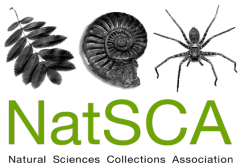This paper describes key findings of the Rights and Rites pilot project, which aimed to: 1) co-curate new interpretations of bio-cultural specimens from Amgueddfa Cymru’s botanical collections, centering on peoples’ lived-experiences and cultural understanding of the specimens’ country of origin; 2) engage local community groups of Asian heritage with relevant biocultural specimens; 3) encourage dialogue and knowledge-exchange about the South Asian flora and; 4) raise awareness of the collections, to reach a wider audience. Through three interactive workshops, new connections were made with 34 members of local Welsh communities with personal and ancestral links to South Asia and others interested in South Asian culture. These workshops created space for individuals to participate in dialogue and share their knowledge about the use of plants in cooking, medicine, celebration and rituals in South Asian cultures. Selected South Asian biocultural specimens were used to initiate conversations and evoke memories connected to the specimens. Participants reported that much of the shared knowledge was based on expertise held in the community, often passed down orally through generations. Questionnaires were used to gauge the interests of the workshop participants, record their perception of Amgueddfa Cymru and to gather feedback and suggestions around the specimens and future work. Workshop findings highlight the importance of valuing expertise and lived-experience held within the local community and the necessity to work with community partners to broaden understanding and interpretation of Museum bio-cultural specimens. Questionnaires highlighted the need for more outreach and events based around collections to appeal to a more diverse audience. The project outcomes are informing the Amgueddfa Cymru strategy around decolonising biocultural collections. They highlight the need for transformations in institutional frameworks to fully support the decolonisation process, including the way outreach and engagement is valued and enabled, and how an ethics of care is central to this work.
**Note that this article is open-access. Other articles in Volume 12 are available to members only for 1 year after publication**
